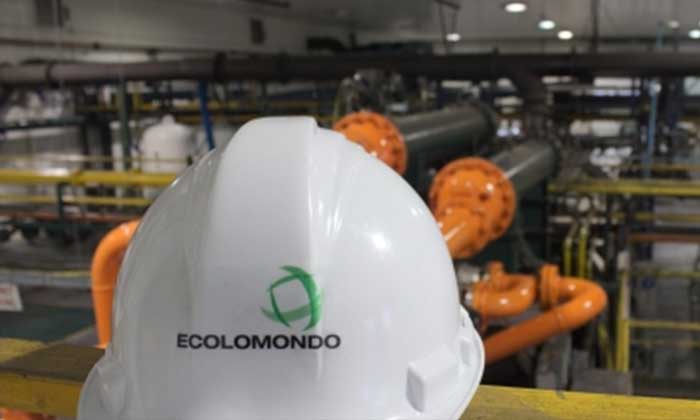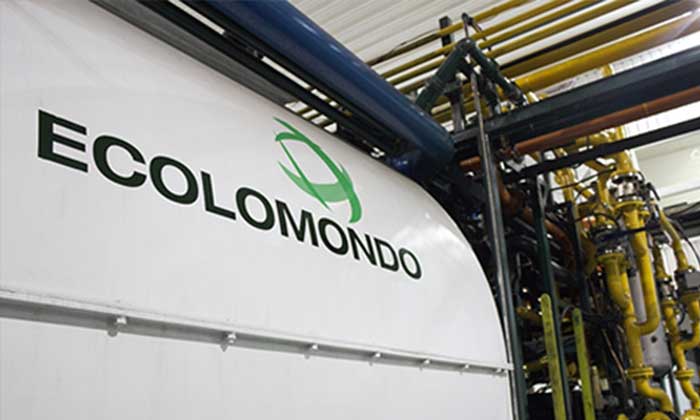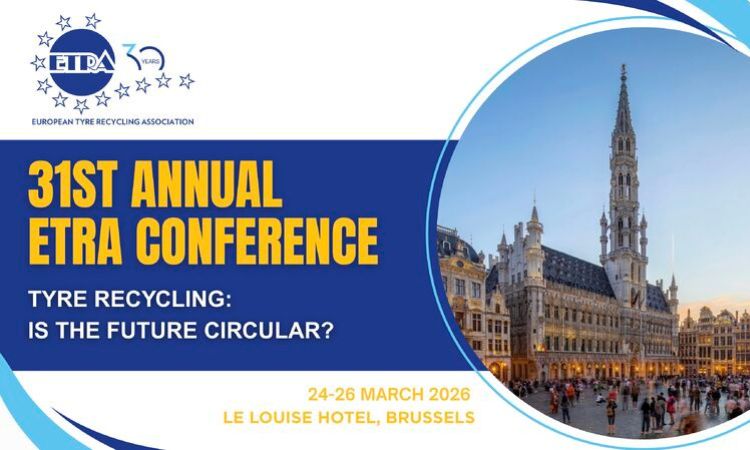Weibold Academy: REACH for chemical recyclers of end-of-life tires – EU regulation (part III)
Weibold Academy article series discusses periodically the practical developments and scientific research findings in the end-of-life tire (ELT) recycling and pyrolysis industry.
This article is a review by Claus Lamer – the senior pyrolysis consultant at Weibold. One of the goals of this review is to give entrepreneurs in this industry, project initiators, investors and the public, a better insight into a rapidly growing circular economy. At the same time, this article series should also be a stimulus for discussion.
For the sake of completeness, we would like to emphasize that these articles are no legal advice from Weibold or the author. For legally binding statements, please refer to the responsible authorities and / or specialist lawyers.
The European Chemicals Agency (ECHA) and REACH
The European Chemicals Agency (ECHA) is a legally autonomous, independent EU authority which, in accordance with Regulation (EC) No. 1907/2006 (REACH), regulates the technical, scientific, and administrative aspects of registration, evaluation and authorization of chemicals. It is based in Helsinki, Finland, and ensures the registration, evaluation, authorization, and restriction of chemicals in a uniform procedure within the European Union. ECHA started its work in 2007.
The purpose of the REACH Regulation ((EC) No. 1907/2006) is to ensure a high level of protection of human health and the environment, including the promotion of alternative methods for assessment of hazards of substances, as well as the free circulation of substances on the internal market while enhancing competitiveness and innovation. (Article 1(1))
The provisions laid down in REACH apply to the manufacture, placing on the market or use of such substances on their own, in mixtures or in articles. REACH is based on the principle that it is the duty of manufacturers, importers, and downstream users to ensure that neither the human health nor the environment are adversely affected. (Article 1(2)(3))
The REACH Regulation is directly applicable in the Member States and does not require (or allow) separate national implementation measures. On the other hand, the Member States have room for discretion in the implementation of the Waste Framework Directive (EC) No. 98/2008 (WFD) although the scope of application is tightly formulated and does not really give room for varied national implementation.
Requirements for recovered chemicals under REACH
REACH provides that waste is not a substance, preparation, or article within the meaning of this Regulation (Article 2(2)). Therefore, REACH requirements for substances, mixtures and articles do not apply to waste.
As soon as a material ceases to be waste, REACH requirements apply in the same way as to any other material, with a few exceptions granted conditionally. The point at which waste ‘ceases to be waste’ has been the subject of long debates. According to Article 6 (1) and (2) of the Waste Framework Directive, waste shall cease to be waste when it has undergone a recovery operation and complies with specific criteria to be developed in line with certain legal conditions, in particular:
- the substance or object is commonly used for specific purposes;
- a market or demand exists for such a substance or object;
- the substance or object fulfils the technical requirements for the specific purposes and meets the existing legislation and standards applicable to products; and
- the use of the substance or object will not lead to overall adverse environmental or human health impacts.
The WFD delegates the task of determining the end-of-waste status to the EU Member States while mentioning that the EU wide end-of-waste criteria could be developed where relevant. Even the European Commission (2018) noted that currently it is not clear what measures are taken in the Member States (to ensure that the recycled materials meet the end-of-waste criteria and whether they are sufficient and effective. Different regulatory end-of-waste regimes across the EU may therefore lead to difficulties in introducing the recycled materials on the EU market and safety concerns due to various interpretations of the end-of-waste in the Member States.
The stage in the processing of waste at which REACH obligations start to apply depends on when the material loses its waste status. This implies that after a material ceases to be waste, the recovery process is at an end. End-of-waste materials may from then on be processed as a substance on its own, in a mixture or in an article in a production process.
In the same way as any other substance falling under the scope of REACH, recovered substances are, in principle, subject to REACH registration requirements.
Is recovery a manufacturing process under REACH?
According to REACH, manufacturers of substances must register their substances on their own or in a mixture (Article 3(1)) if they are manufactured in quantities larger than one tonne per year (Article 3(2)). Consequently, it needs to be clarified whether recovery is a continuation of the use of the originally registered substance and if this is not the case, then, secondly, whether it is “manufacturing” that transforms waste into one or several substances as such, in a mixture or in an article again. (ECHA, 2010)
REACH defines manufacturing as “production or extraction of substances in the natural state” (Article 3(8)). Substances that have undergone a chemical modification during the waste and recovery process clearly fulfil this definition. Therefore, a recycler of end-of-life tires (ELT) who recovers chemical substances (oil and rCB) by means of a selected chemical recycling technology (pyrolysis) becomes a manufacturer of substances and a REACH duty-holder.
Chemical recyclers of end-of-life tires are therefore both waste managers and manufacturers of substances who must comply with waste management and chemicals legislations. (ECHA, 2021)
Identification of the recovered materials
Chemical recyclers of end-of-life tires by means of pyrolysis technologies are manufacturing
- pyrolysis oil (TDO) and
- recovered Carbon Black (rCB)
from waste rubbers and end-of-life tires, which raises the question of how to identify these products under REACH.
In order to assess registration requirements for recovered materials, it is essential to clearly identify whether the particular material is a “substance” as such, a “mixture” (containing 2 or more blended substances) or an “article”. The latter is omitted as a definition for the materials recovered here, since neither TDO nor rCB is an "article" in the sense of REACH. (An object is an “article” if you can unambiguously conclude that the shape, surface, or design of an object is more relevant for the function than its chemical composition.)
According to REACH, a substance is defined as “a chemical element and its compounds in the natural state or obtained by any manufacturing process, including any additive necessary to preserve its stability and any impurity deriving from the process used, but excluding any solvent which may be separated without affecting the stability of the substance or changing its composition.” (Article 3(1))
Substances can be divided into two main groups:- Well defined substances: Substances with a defined qualitative and quantitative composition that can be sufficiently identified based on the identification parameters of REACH Annex VI section 2. Rules for identification and naming differ for:
- a. mono-constituent substances with one main constituent (in principle >80%)
- b. multi-constituent’ substances with more than one main constituent (in principle each constituent >10% and <80 %)
- UVCB substances: Substances of Unknown or Variable composition, Complex reaction products or Biological materials, also called UVCB substances cannot be sufficiently identified by their chemical composition, because:
- a. The number of constituents is relatively large and/or
- b. The composition is, to a significant part, unknown and/or
- c. The variability of composition is relatively large or poorly predictable. For such substances, further identifiers must be considered such as sources of origin or type of production processes.
The approaches to identify a substance as a mono-constituent or as a UVCB substance are relevant for recyclers of end-of-life tires and their recovered substances.
Exemption from the requirement to register under REACH
If the chemical recycler of end-of-life tires can ensure that the individual substances have been registered before he can benefit from the exemption in Article 2(7)(d) of REACH provided the relevant safety information is available.
It should be noted that companies willing to benefit from this exemption must provide the authorities (only on request) with appropriate documentation proving that their recovered substances qualify for the exemption to register under REACH.
Substances, on their own, in mixtures or in articles, which have been registered in accordance with Title II and which are recovered in the Community are exempted (from the requirement to register) if the result from the recovery process is the same as the substance that has been registered before in accordance with Title II; and the information required by Articles 31 or 32 relating to the substance that has been registered in accordance with Title II is available to the establishment undertaking the recovery. (Article 2(7)(d))
It should be noted that importers of substances recovered outside the borders of the European Economic Area (EEA) cannot benefit from the exemption under Article 2(7)(d) of REACH as it only applies to recovery within the EEA.
“Sameness” of a recovered substance and a substance already registered
Article 2(7)(d)(i) of REACH provides that the substance that results from the recovery process is the same as the substance that has been registered by any registrant (note: this registrant does not have to be part of the supply chain leading to the waste generation). This part of the legal text comprises two requirements: The exemption relies on an (a) existing registration, and the recovered substance (b) is the same as the substance that has been registered.
This means that if, for some reason, the same substance has not been registered at manufacturing or import stage, the recovered substance must have been registered before the recovered substance with an end-of-waste status can be imported or placed on the market.
In assessing whether the recovered substance is the same as a substance that has already been registered or whether the substances are different, recovery operators need to apply the rules of the guidance on substance identification. The decision must be based on the sameness of the main constituents. Information about the impurities in principle does not change the conclusion about the sameness.
The assessment about the “sameness” of the recovered substance needs to be made by the chemical recycler themselves using all the available information such as the Guidance for identification and naming of substances under REACH. There is no confirmation given on “sameness” by the European Chemicals Agency!
The same EINECS and CAS numbers for substances are an indicator for the sameness of substance.
“Information” required to benefit from the exemption
Article 2 (7)(d)(ii) of REACH provides that the information required by Articles 31 or 32 relating to the substance that has been registered in accordance with Title II is available to the company undertaking the recovery.
The chemical recycler that did the recovery must ensure that information on the registered substance is available to him (without violating any property rights!), and that information must comply with the rules on information provision in the supply chain.
With exception of a Safety Data Sheet (SDS), the form in which this information has to be available to the company carrying out the recovery is not further specified in REACH, but it should allow recovery operators to comply with their duties under Title IV of REACH.
Recovery operators will normally not receive an SDS or other safety information in the framework of Title IV of REACH. To benefit from the registration exemption under Article 2(7)(d) of REACH, the required information must however be available to them. Furthermore, whenever required, they need to either prepare SDSs themselves or agree with owners of existing SDSs on using those SDSs. As there are no further legal provisions on this, this is a matter for the manufacturer of the recovered substance. The recovery operator can use any available information, starting with the information on the ECHA website, but must make sure that he does not violate any property rights. When using an existing SDS, he should, therefore, make sure that he has legitimate access to the information, and that the hazard profile of his recovered substance is adequately covered by this existing SDS. The same applies to other safety information, if required.
Summary
The chemical recycling of end-of-life tires (ELT) through pyrolysis is a recovery operation by which waste materials (e.g., end-of-life tires) are reprocessed into chemical products (recovered Carbon Black and tire-derived-oil (TDO)) to become input feedstock for chemical plants and other industries.
Therefore, chemical recyclers (of end-of-life tires) are both waste managers and manufacturers of substances who must comply with waste management and chemicals legislations. (ECHA, 2021)
Chemical recyclers of ELTs manufacture two products that require registration, namely pyrolysis oil from waste rubbers and tires (EC Number 948-949-8) and recovered Carbon Black (CAS Registry Number 1333-86-4).
In both cases, the exemption from the registration requirement could be invoked, provided the “sameness” of the substances is ensured; and the information required by REACH about this substance is available to the chemical recycler without violating any property rights.
Weibold is an international consulting company specializing exclusively in end-of-life tire recycling and pyrolysis. Since 1999, we have helped companies grow and build profitable businesses.









